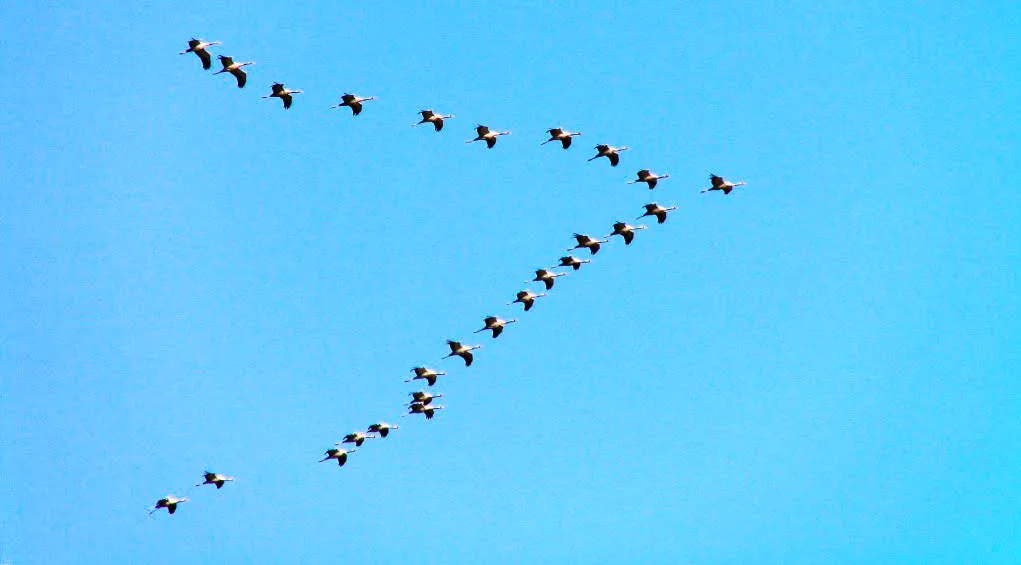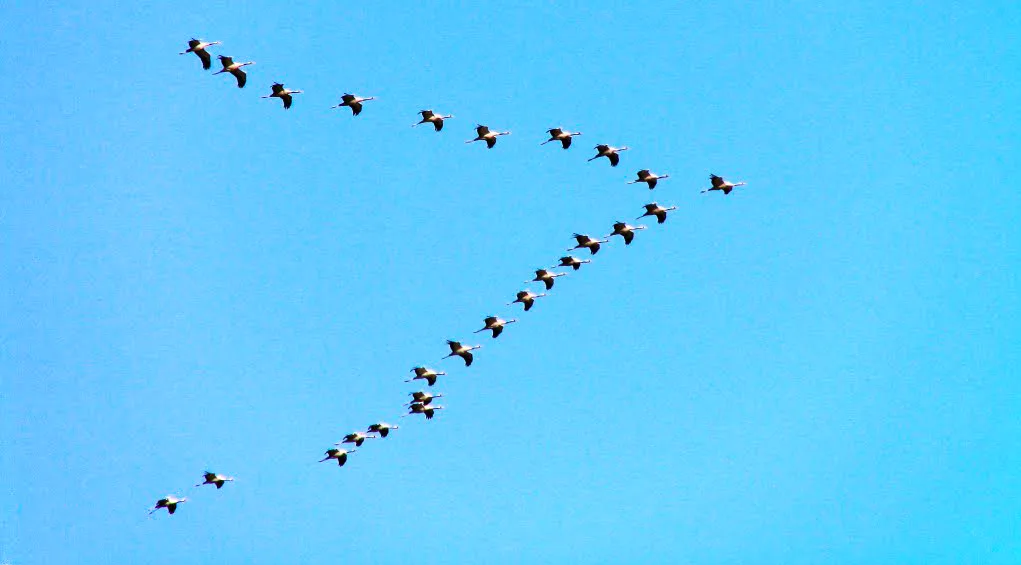
Migrating birds' V-shaped flights have some amazing science behind them
The iconic "V" formation of migrating birds isn't just a marker of fall, it also serves a practical purpose
As we look up into the skies, we notice a flock of birds flying toward the south, arranged in a V-shaped formation. It’s an unmistakable sight in the fall, reminding us that colder and darker days lie ahead.
There’s actually quite an interesting science behind why certain species of large birds organize themselves in this manner, and it has everything to do with efficiency – especially for the long-haul flights of migration.
It turns out that when large birds flap their wings, circulations of air are generated, called vortices, which have both rising and sinking segments. The rising segments are found behind and to the outside of the wings, and are called upwash, while the sinking segments are called downwash.
To maximize “lift,” trailing birds utilize the cushions of air in the rising segments to reduce their overall effort to stay airborne. In order to conserve energy, the lead birds, who do not benefit from these flight dynamics, regularly swap positions to share the workload with the rest of the flock.

Image: Eurasian Cranes migrating to Meyghan Salt Lake, Iran. Credit: Hamid Hajihusseini/Wikipedia
Studies have shown that the birds will often flap in phase with leading birds, to time the rising currents of air most effectively. Likewise, should they drift into sinking currents of air directly behind leading birds, they will flap at opposite times. It is unknown exactly why this is the case, but has been theorized that it may be an attempt to dampen the negative effects of sinking air for following birds.
While it is unknown whether these vortex-surfing birds can simply sense currents of rising air, or if they may even be able to predict them, the fact that they have found a way to benefit from these complex flight dynamics is truly fascinating.